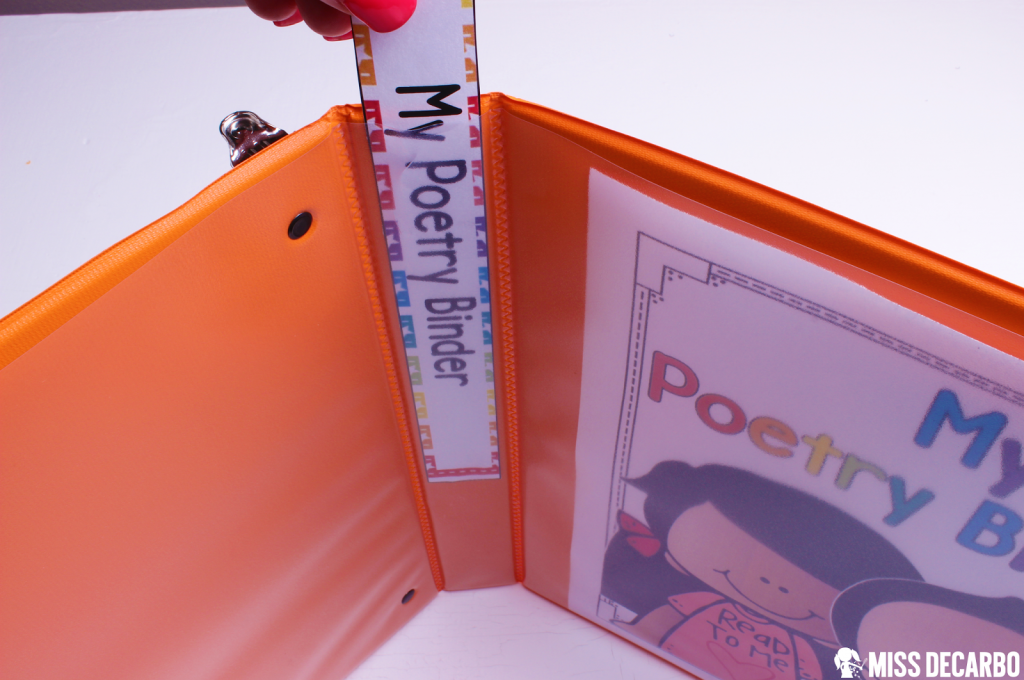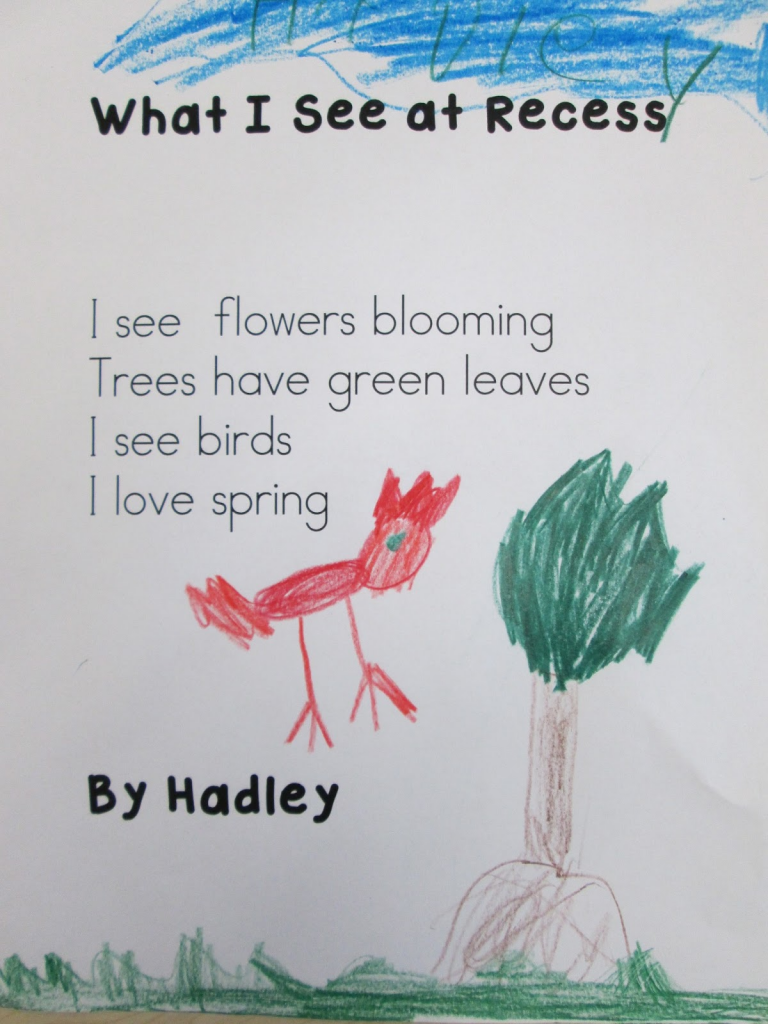“Poetry can indeed change lives, which can in turn change the world.” —Richard Blanco,
Academy of American Poets Education Ambassador

Yesterday, kicked off National Poetry Month. Poetry wasn’t really something I was passionate about, nor did I feel I had time for in my classroom until one of my colleagues invited me to her classroom for a peer observation. It wasn’t until I saw the benefits of incorporating poetry into a classroom that I made it a priority to embed poetry into my interdisciplinary units!
What are the benefits of incorporating poetry into your daily schedule? Here are a few of the many reasons why you should be using poetry across all content areas:
- Poetry encourages creativity
- Poetry builds reading, speaking, & listening skills

- Poetry inspires writing skills
- Poetry is a tool that can be used to explore vocabulary and language
- Poetry helps foster a LOVE OF READING
You might be thinking, “Okay great, you didn’t tell me anything I didn’t already know. Of course there are benefits of incorporating poetry into my classroom, but I still don’t have time to do it and still don’t really enjoy poetry!” Worry no more, I am here to help provide you with tangible ideas you can use, at any grade level 🙂 so that you and your students can not only celebrate National Poetry Month, but also reap the benefits of having poetry in your lives.
 When I started to incorporate poetry into my classroom, I needed a schedule, something concrete to ensure I stuck with my implementation plan. Here was what worked for me…
When I started to incorporate poetry into my classroom, I needed a schedule, something concrete to ensure I stuck with my implementation plan. Here was what worked for me…
I would find 1 poem that related to something we were going to learn about that week, a topic we had been studying, an upcoming holiday, or just a poem that stuck out to me in some way. I would type up the poem and print one copy out for each student in my class. On Monday, morning when students would enter the classroom they would find their new poem all ready for them at their seats. Now that each student had their poem, our activity with the poem changed from day to day:
-
- Monday: Given that I taught elementary, students would then use a highlighter to highlight all the words they could read from the poem independently – students were amazed by the end of the year they were highlighting almost every word on the page….talk about a celebration!!! After everyone had settled in and highlighted their words, we would do a Shared Reading Experience with the poem. During our shared reading, we would read the text to become familiar with the contents and make connections.
- Tuesday: As students enter the classroom, they would find 3 people to read the poem aloud too, the three listeners signed the back of the poem with their name. Once the reader had 3 signatures he/she would
 go to their seats to illustrate their poem. I can’t tell you how much we, as a classroom community, loved this creative time each week. I would put on music as the students’ creative juices flowed onto their papers, this also led itself to many great mini lessons on imagery! After everyone had settled in, we would gather again for yet another shared reading experience, this time with a different focus. I would read the poem aloud to them, then they would read it with me, to end our shared reading experience I would have 5 students put their illustrations under the document camera to explain what they drew and why. After they shared their drawing they read the poem aloud to their classmates (or read it aloud with me).
go to their seats to illustrate their poem. I can’t tell you how much we, as a classroom community, loved this creative time each week. I would put on music as the students’ creative juices flowed onto their papers, this also led itself to many great mini lessons on imagery! After everyone had settled in, we would gather again for yet another shared reading experience, this time with a different focus. I would read the poem aloud to them, then they would read it with me, to end our shared reading experience I would have 5 students put their illustrations under the document camera to explain what they drew and why. After they shared their drawing they read the poem aloud to their classmates (or read it aloud with me). - Wednesday: Following the same morning routine, students would get out their poem for the week, find 3 people, read the poem aloud and have the listeners sign the back of the poem. Students would then, independently, underline any interesting words they noticed. This sounds like a vague directive and it is, the goal here is to get students thinking about word choice and patterns within poems. Keeping with our routine, I followed Regie Routman’s “I do, We do, You do” mentality as I read the poem to the class, they read it with me, then 5 students shared their observations about the words they discovered throughout the poem which naturally led to our shared reading lesson on word choice, alliteration, rhyme, assonance, consonance, couplet, rhythm, etc. for the day.
- Thursday: I bet you can’t guess how my kiddos started their morning off? Yep, you guessed it…reading their poem of the week to 3 people and have them sign the back.
 After they were done reading to a buddy, students went back to their seats and circled all the punctuation they could find throughout the poem. As we met for our shared reading lesson, we would read the poem being mindful of the punctuation and talking/learning about fluency.
After they were done reading to a buddy, students went back to their seats and circled all the punctuation they could find throughout the poem. As we met for our shared reading lesson, we would read the poem being mindful of the punctuation and talking/learning about fluency. - Friday: Students did not have to read their poems to a friend today, they were asked to go to their seats and write their own poems about the same topic from our poem from the week. Students were hesitant at first, but really opened up and enjoyed this activity as the year progressed. In lieu of our shared reading, we would have 5 students share the poem they created with the class aloud!
Sidenote worth mentioning: Your shared reading “topics” will vary from week to week and day to day depending on your level you teach, areas of focus for the week, and of course the poem. Each day students were required to read their poem to 3 different people than had already signed their paper.
 Obviously, these are not the only ways to incorporate poetry into your classroom; nor is it the only successful way I was able to integrate the fun poetic patterns into my day but it is a great starting point for those who struggle to find the time and/or enjoyment in teaching poetry. Plus, at the end of the year students had their very own “Poetry Binder” filled with their beautiful illustrations and poems they could read 100% independently!
Obviously, these are not the only ways to incorporate poetry into your classroom; nor is it the only successful way I was able to integrate the fun poetic patterns into my day but it is a great starting point for those who struggle to find the time and/or enjoyment in teaching poetry. Plus, at the end of the year students had their very own “Poetry Binder” filled with their beautiful illustrations and poems they could read 100% independently!
Happy National Poetry Month!!!

 Katie Algrim – Director of Innovative Professional Learning
Katie Algrim – Director of Innovative Professional Learning
(t):630-444-3044
(c):630-675-4447
(e):kalgrim@kaneroe.org


 go to their seats to illustrate their poem. I can’t tell you how much we, as a classroom community, loved this creative time each week. I would put on music as the students’ creative juices flowed onto their papers, this also led itself to many great mini lessons on imagery! After everyone had settled in, we would gather again for yet another shared reading experience, this time with a different focus. I would read the poem aloud to them, then they would read it with me, to end our shared reading experience I would have 5 students put their illustrations under the document camera to explain what they drew and why. After they shared their drawing they read the poem aloud to their classmates (or read it aloud with me).
go to their seats to illustrate their poem. I can’t tell you how much we, as a classroom community, loved this creative time each week. I would put on music as the students’ creative juices flowed onto their papers, this also led itself to many great mini lessons on imagery! After everyone had settled in, we would gather again for yet another shared reading experience, this time with a different focus. I would read the poem aloud to them, then they would read it with me, to end our shared reading experience I would have 5 students put their illustrations under the document camera to explain what they drew and why. After they shared their drawing they read the poem aloud to their classmates (or read it aloud with me). After they were done reading to a buddy, students went back to their seats and circled all the punctuation they could find throughout the poem. As we met for our shared reading lesson, we would read the poem being mindful of the punctuation and talking/learning about fluency.
After they were done reading to a buddy, students went back to their seats and circled all the punctuation they could find throughout the poem. As we met for our shared reading lesson, we would read the poem being mindful of the punctuation and talking/learning about fluency.